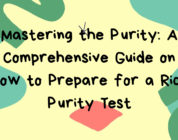The Rice Purity Test works by providing a checklist of 100 activities. The test-taker goes through this list and checks off the items they’ve experienced. The final score is calculated by subtracting the number of checked items from 100, giving a measure of the person’s ‘purity’.
The Rice Purity Test is a self-assessment tool that measures an individual’s level of sexual experience and behavior. It consists of 100 questions that cover a range of topics related to sexual activity, such as kissing, sexual intercourse, and drug use.
The test works by asking the individual to answer “Yes” or “No” to each question. Once all 100 questions have been answered, the test will provide a score ranging from 0 to 100. The higher the score, the more sexually experienced the individual is considered to be.
The questions on the Rice Purity Test are designed to cover a broad range of sexual experiences and behaviors. Some questions are relatively innocuous, such as “Have you ever held hands romantically?” while others are more explicit, such as “Have you ever had anal sex?”
The test is anonymous and does not collect any personal information or data. It is designed to be taken privately and shared only if the individual chooses to do so. The questions are not weighted, and each question is worth the same number of points, so the score is a straightforward measure of sexual experience.
While the Rice Purity Test can be a useful tool for individuals to reflect on their own sexual experiences and behavior, it’s important to remember that the test is not a comprehensive measure of sexual health or well-being. It does not take into account important factors such as consent, communication, and safe sex practices. It’s important to prioritize these factors in sexual relationships and experiences.
In conclusion, the Rice Purity Test is a simple and straightforward tool to measure an individual’s level of sexual experience and behavior. It’s designed to be taken privately and can be a useful tool for self-reflection. However, it’s important to recognize the limitations of the test and to prioritize comprehensive sexual health education and resources.




